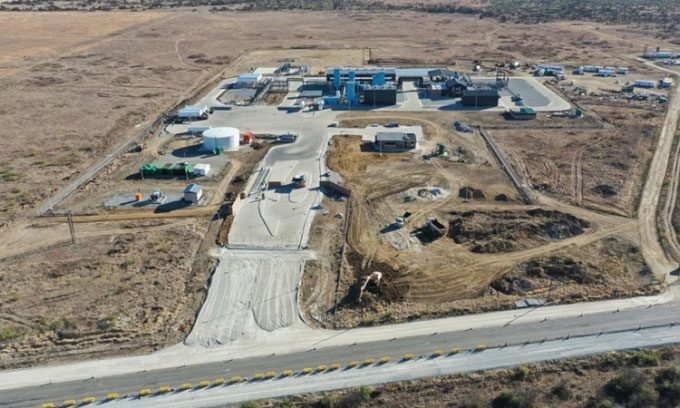When Renergen invested $1 to purchase mining rights for gas, they never anticipated discovering a helium deposit valued at over $4 billion.
When the startup Renergen acquired exploration and production rights for a gas field near Virginia, a town in the Free State province of South Africa, the founder hoped to find a small source of natural gas that could present an extraction opportunity. They paid $1 for the mining rights in 2013, according to CEO Stefano Marani, and began testing the gas composition from two rusty drill pipes installed years prior during mineral exploration. What they found was an unusually high concentration of helium, reported CNN on January 4.

Renergen owns exploration and production rights for 187,000 hectares of gas field in Welkom, Virginia and Theunissen in the Free State province. (Photo: Renergen).
Helium has many commercial applications. When condensed into liquid form, it serves as a crucial refrigerant used in microchip manufacturing and operates magnetic resonance imaging technology that saves lives. However, the global helium market is volatile, with an unstable supply, as this gas is produced by fewer than 10 countries worldwide. Renergen is incredibly fortunate. The company currently reports helium reserves of over 198.2 million m3 at the Virginia gas project, valued at more than $4 billion, and it could potentially rise to $12 billion when including probable reserves.
Renergen successfully produced liquid helium from its plant for the first time in January 2023. After several delays throughout the year due to a vacuum leak in the helium cold box, they hope to commence commercial operations in February 2024, extracting helium alongside natural gas, which will then be processed and distributed to clients like Linde, a global engineering company.
This may make Renergen’s helium gas more environmentally friendly, according to Chris Ballentine, a geochemistry professor at the University of Oxford in the UK. Typically, helium is produced as a byproduct of liquefied natural gas (LNG), which is primarily methane. Only at concentrations of about 0.3% does direct helium extraction become economically viable. Thus, in most cases, helium supply is dominated by oil and gas producers and high carbon-emitting production activities. What makes Renergen’s project noteworthy is that their helium production generates significantly lower emissions.
Another advantage of the high helium concentration is lower production costs. “We produce helium at much lower costs than most of our competitors in the market. We drill very shallow wells, around 305 – 457 m, and the gas flows naturally,” Marani shared.
The company’s Phase 1 project is a small pilot operation funded by the U.S. government, set to produce about 350 kg of helium daily, sufficient to meet South Africa’s demand with a surplus. Phase 2, which will commence in 2027, aims to increase production to 4.2 tons per day, accounting for about 6 – 8% of global helium supply. With the helium market projected to exceed $6 billion by 2027 according to Research and Markets, this figure will generate significant revenue.



















































